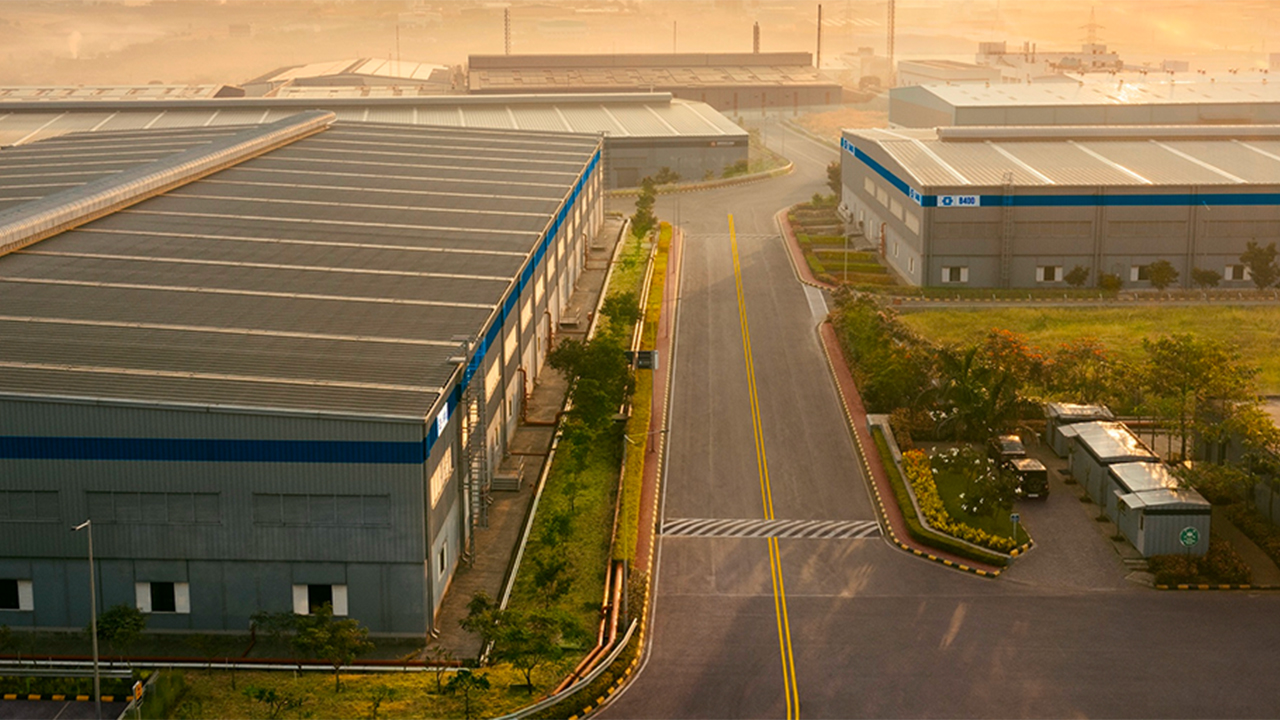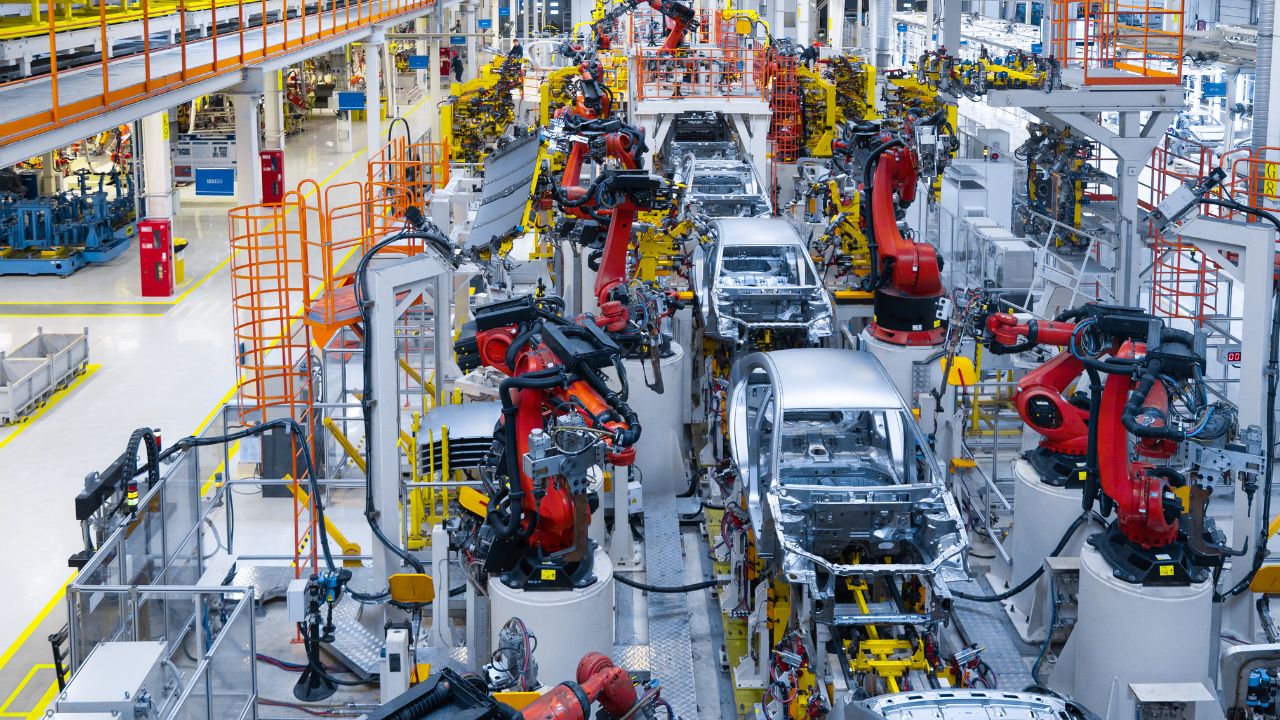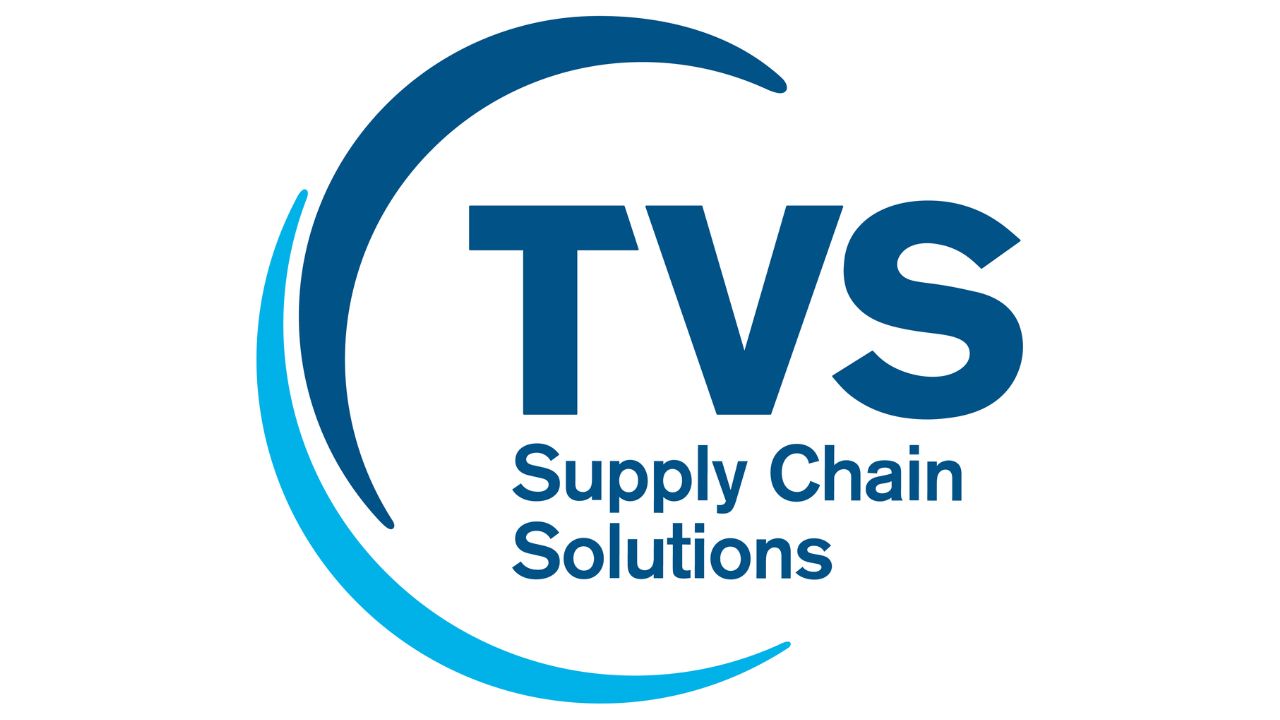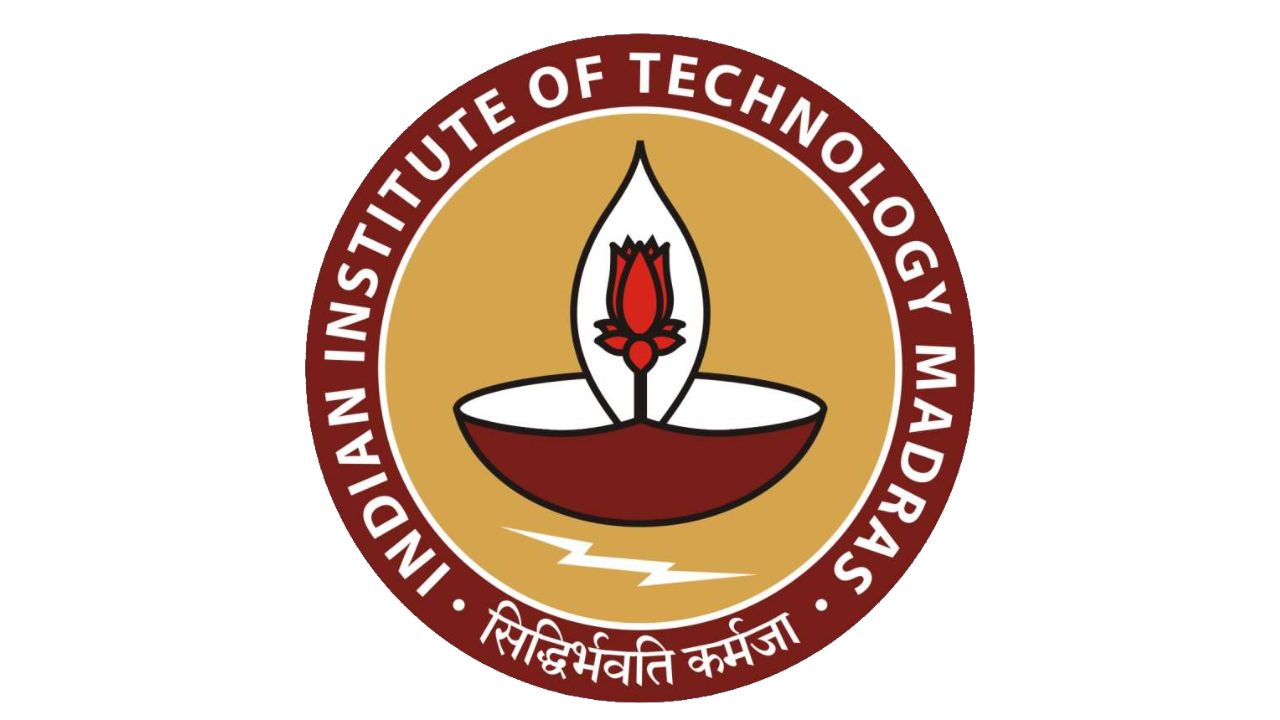Traditional IT systems are not equipped to handle the amount of uncertainty that businesses face today. To cope better, companies need technology that incorporates feedback in real time and adjusts accordingly. But the technology doesn’t have to replace existing systems.
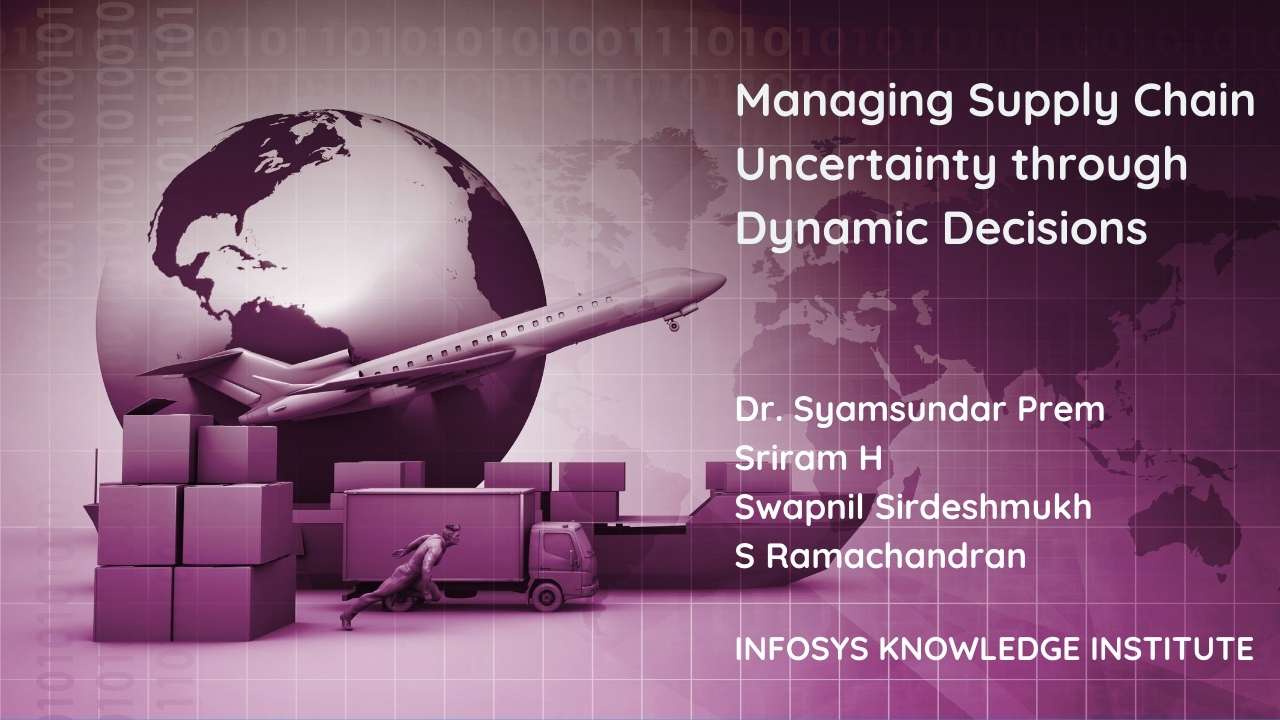
Businesses today face levels of unpredictability beyond what their executives could have foreseen. Uncontrollable factors have always been inherent in business, particularly in supply chains. But there is no doubt that COVID-19 has amplified the scale and intensity of such uncertainty.
For example, in 2020, car sales in the U.S. showed fluctuating trends due to the COVID-19 pandemic. According to market research firm J.D. Power, new car sales fell by 45% in April compared with 2019 because of factory shutdowns and a fall in demand. May and June saw some recovery. Factories restarted production in July. October showed a 3% increase in sales volume compared with the previous year, driven by a recovery in consumer demand.
According to Gartner, 80% of companies continue to develop their strategic planning cycles on the basis of an annual calendar.1 Such a strategy can be outdated when disruptions such as COVID-19 occur during the year. Organizations will find it challenging to evaluate the new situation and take steps to adapt.
Gartner points out that a continuous adaptive process is different from previous one-time initiatives. This approach understands that the only way to keep pace with change is to practice ongoing and regular updates, in response to a dynamic external environment. The core of an adaptive strategy is the continuous monitoring and identification of trends to allow timely action that avoids costly mistakes.
To manage such uncertainty in a business and hence in its supply chain, we believe organizations must create a dynamic decision-support system. This system need not replace existing business processes or IT applications. It is a layer on top of the existing applications, talking to each one of them to provide one unified view of the processes and functions along with their status. The system has these two components:
➢ Supply chain control tower — Implementation of a closed-loop supply chain system for visibility into key metrics and timely action.
➢ Simulated scenario analysis — Proactive planning with situational analysis and an approach to manage each scenario when it occurs.
A dynamic decision-support system can help firms manage uncertainties in business and supply chain
As a hypothetical example, in the case of a supply chain facing a shortage of material and a potential stoppage to the assembly line, how can such a decision-support system help? It can provide a holistic picture of the situation. The closed-loop system can show the real-time status of critical parameters. The system can derive and present multiple scenarios that could fix the issue, with the impact on timeline, cost, and probability of success attached to each one. In this example, a dynamic decision-support system could give the following recommendations:
➢ Suggest alternate parts that are available within the plant and reprioritize orders.
➢ Check the inventory level in sister plants and transfer materials when possible.
➢ Reach out to existing suppliers that can provide the exact part or an equivalent.
➢ Evaluate new suppliers and determine whether they can provide the part.
These four options can be presented to decision-makers so they can decide and act. Once the system reaches a steady state, it can be an autonomous, rational system that makes decisions on its own. It can keep the necessary stakeholders informed and proceed, self-learning at each opportunity to make a decision.
Control Tower For Unified View Of Enterprise
The first approach we suggest to manage business uncertainty is to implement real-time transparency across the organization. But organizations struggle to get a unified view across multiple IT systems and multiple suppliers and factories. Multinational companies have plants around the globe that have been acquired over years and use different enterprise IT systems (Figure 1).
Figure 1. A multi-factory setup with diverse IT systems and business uncertainty
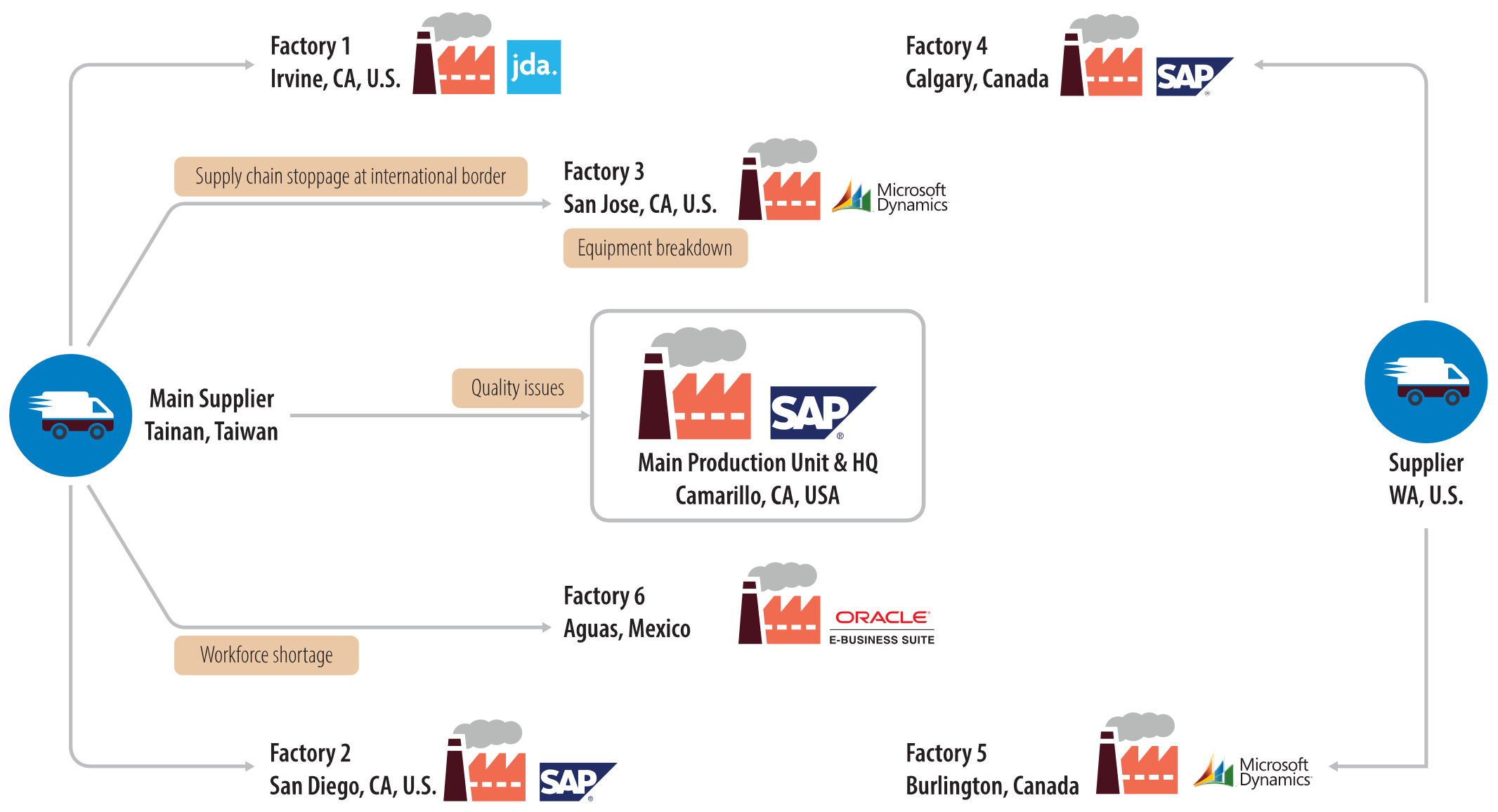
Source: Infosys
Western Digital faced such a situation when it acquired SanDisk and Hitachi Global Storage Technologies, each with their own legacy on-premises enterprise resource planning (ERP) systems. It took four years to migrate them to one common cloud ERP application. This is an effective approach but one that comes with a high cost for the technology and the migration. It also requires change management efforts to ensure widespread adoption. The process has to be repeated if more companies are acquired. The new system can be an inflexible monolith that doesn’t take into account regional variations among business processes. A more flexible approach is a supply chain tower. The control tower consolidates key data from multiple business units, factories, information systems, and platforms into one unified view (Figure 2). This view is an input for scenario analysis and decision-making. It provides visualization of real-time data to assist decision-makers. The tower generates data-based insights and offers algorithmic, rational options when a decision has to be made. Once tested and proven, the human element can be removed so the system can make autonomous decisions based on a rulebook.
Stakeholders in any organization have diverse requirements and expectations. The control tower must address each of them. For example, the chief procurement officer needs visibility throughout the supply chain. That big-picture understanding generates enterprise-level insights for risk mitigation and helps maintain important business metrics. A procurement manager’s focus at the next level is on balancing inventory across plants, evaluating suppliers, and reselling scrapped parts. A material planner’s objective at the ground level is to forecast demand, fulfill orders on time, and manage shortages.
Organizations that have adopted a supply chain control tower have reported significant benefits. Pfizer’s control tower is used to measure the flow of its orders and products with end-to-end visibility, while Dell uses it to coordinate parts and field technicians for swift response to customer requests.2 Electronics contract manufacturer Flex reduced several days of inventory by adopting supply chain visualization tools across 100 manufacturing locations. It freed up $200 million of working capital.3
Figure 2. The supply chain control tower provides a unified perspective
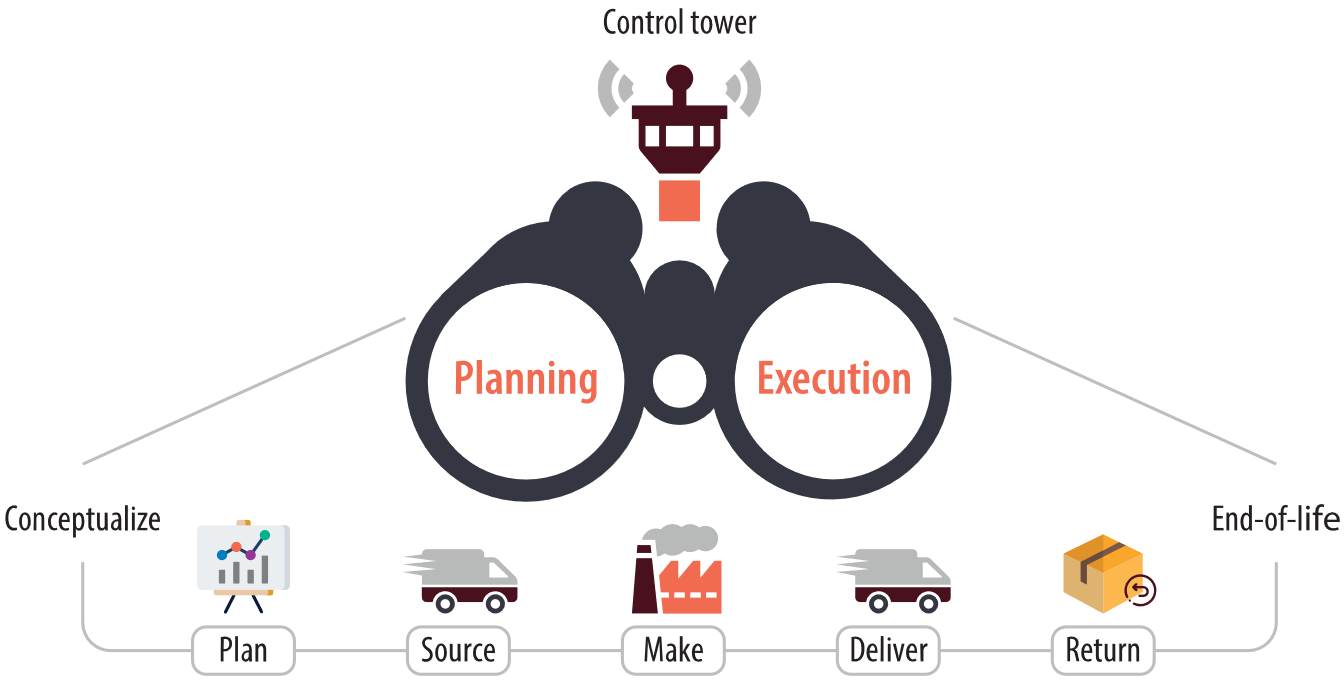
Source: Infosys
Simulated scenario analysis for proactive planning
For all their benefits, control towers have a limitation depending on how they are implemented. They provide visibility only after an event has occurred. Companies can use what-if situation analysis to take a more proactive approach to manage business uncertainty. This involves a thorough examination of all situations that an organization’s supply chain can face, with plans to manage each situation when it occurs.
To support such planning, digital twins can simulate situations in three-dimensional space. These are digital representations of real-world physical systems. Simulating the flow of goods in a supply chain with replicas of logistics hubs can help improve the efficiency of operations and support what-if analyses.
An example of this is the Singapore Port Authority’s digital twin, a replica of its hub for container shipping.4 Simulation is used to evaluate multiple scenarios and expedite the generation of layouts. The objective is to optimize facility management. Using this system, the best possible location for a vessel can be chosen, taking into account the shared assets, space, and personnel required to unload and load it. On a much larger scale, the Singapore government has created Virtual Singapore, a digital twin of the city used for real-time modeling of the demographics, traffic, and weather.
Simulations can be performed without digital twins, too. Dell’s SupportAssist system is one example. It is an automated after-sales support system to reduce troubleshooting efforts.5 It receives vital parameters and error codes from remote devices to predict their failure proactively. But market adoption of SupportAssist was low. So Dell created a series of system dynamics models to analyze SupportAssist’s market adoption and to increase it.
Digital twins can boost efficiency of operations and support what-if analyses by simulating the flow of goods in a supply chain
Diverse data sources were used to develop the model, including expert knowledge from the field, statistical techniques, and textual analysis of archived system-failure data. The models developed by Dell forecasted SupportAssist’s market adoption under different scenarios. It helped in decision-making for investments in its features, promotion activities, and delivery. It led to faster and better adoption of the system. The estimated benefit of the new approach was $50 million over five years.
Unified planning and execution
In effect, implementing a control tower and proactive planning changes the way supply chains are traditionally managed. It brings the previously independent functions of planning (managed by systems such as JDA, Microsoft Dynamics) and execution (managed by ERP systems such as SAP and Oracle) under one roof (Figure 2). But implementing and maintaining this kind of logic in these applications is challenging. Yet the control tower solves this by creating a new layer that combines this logic across the underlying systems.
The control tower solution enables visibility and data flow across the entire value chain of business partners in real time, which brings supply-chain visibility and performance to an entirely new level by marrying planning and execution to achieve best results. It automates data gathering to reduce the need for people doing it.
The what-if scenario analysis helps organizations avoid the element of surprise and have a plan of action for each possible problem. A decision-support system can act as a layer that talks to all IT systems and helps business leaders make the right decision when delays can cost money and customers. Simulation models provide a response to specific scenarios as close to the real-life situation as possible based on mathematical models.
Combining these systems under one roof will require considerable investment in employee reskilling — and changes to the supply chain planning and execution operating models. Ultimately, it should result in a reduction of effort spent on repetitive work, an increase in the speed of decision-making and the accuracy of decisions. It should enable teams to focus on more value-adding initiatives.
Decision support systems communicate with all IT systems, helping leaders with timely decision making
Even after the pandemic is over, unforeseen situations will arise — and the pressure to compete based on speed and cost will remain. 2020 has taught supply chain managers some very tough lessons — and exposed the cracks between planning and execution. Now is the time to combine these functions and create a seamless supply-chain model for the 21st century.
NEWSLETTER
TRENDING ON PRO MFG
MORE FROM THE SECTION





